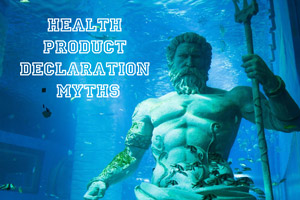3 Myths About Health Product Declarations
- < How Your Outdated AIA Course is Affecting Your Brand
- > HPDs--Why Product Transparency is the New Norm
The Health Product Declaration (HPD) has become the industry standard for reporting the material contents of building products and the health effects associated with these materials. However, there are many myths and tons of misinformation about HPDs in the marketplace. In 2011, the HPD Working Group released its initial draft of the HPD. A select group of building product manufacturers volunteered to participate in a Pilot Program to test the draft format. Expert reviewers from the building industry provided crucial feedback which led to the launch of HPD Version 1.0 at Greenbuild 2012.
Educating both design professionals and building product manufacturers has been a difficult task to say the least. Since the launch of the HPD several years ago, many myths have circulated about HPDs, from the coffee stained tables at leading design firms to the assembly lines at billion dollar manufacturing facilities. We will examine three myths that relate to the HPD and how they have affected its adoption by the industry.
Myth #1- HPDs Give Away Trade Secrets
The biggest myth about the HPD is that it gives away company trade secrets. I don’t know how many times I have talked to building product manufacturers who are scared that if they develop an HPD, their competition will discover their chemical formulations and put them out of business. While the ideal for the HPD's inventory of contents is 100% disclosure of both content identity and hazards, the HPD Open Standard supports a variety of standards when disclosure limitations exist, including intellectual property concerns. Some manufacturers are able to provide full disclosure, while other manufacturers are concerned with intellectual property concerns. These concerns are unfounded in that there are mechanisms in place to protect trade secrets, proprietary formulations, and intellectual property. However, it should be noted that major design firms will often require or give preference to HPDs that at least comply with the "Full Disclosure of Known Hazards" requirements.
Myth #2- All HPDs Are LEED Compliant
All HPDs are not created equal. A LEED compliant HPD can help contribute points for the LEED credit Building product disclosure and optimization - material ingredients. The HPD must meet the mandatory requirements for LEED v4 in order to qualify. There are several common mistakes that building product manufacturers make when developing an HPD. Mistakes that will cost a manufacturer include: not meeting the minimum content inventory threshold of 1,000 ppm. For example, if you manufacture a carpet tile and your product ingredients are per an OSHA MSDS at 10,000 ppm, you will fail to meet the LEED credit requirements. There are several other mistakes that can cost a manufacturer and prevent them from contributing to the LEED credit. The HPD Collaborative has excellent resources for building product manufacturers to use.
Myth #3- HPDs Are A Fad & Will Go Away
This is a common myth I hear at trade shows, conferences, and other social events. HPDs are becoming routine for product specification at several prominent firms. SmithGroup JJR has created an entire building product library that contains numerous HPDs for product specification. There are at least 30 major design firms requesting or even requiring HPDs for specification. HPDs are not a fad and will become the norm over the next few years.
If you are a manufacturer, does your company offer HPDs for your products? If you are a design professional, does your firm utilize HPDs for product specification?
For more information or to discuss the topic of this blog, please contact Brad Blank





